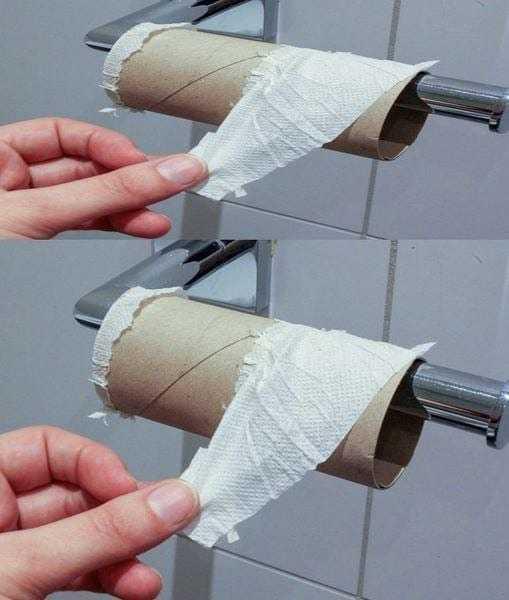ADVERTISEMENT
tions, and standalone models are becoming more affordable and easier to install. With more people turning to bidets, toilet paper could eventually become a thing of the past.
For Complete Cooking STEPS Please Head On Over To Next Page Or Open button (>) and don’t forget to SHARE with your Facebook friends
### 2. **Reusable Toilet Cloths (Family Cloths)**
Another alternative to toilet paper gaining traction is the use of **reusable toilet cloths**, often referred to as “family cloths.” These small, washable cloths are designed to replace disposable toilet paper. After use, they are simply rinsed, washed, and reused, offering a more sustainable and cost-effective option in comparison to single-use toilet paper.
Though the idea of using cloths for personal hygiene may seem unconventional to some, it’s a practice that aligns with zero-waste and sustainability principles. Supporters argue that family cloths are better for the environment and the wallet, as they reduce waste and eliminate the need to continually purchase toilet paper.
However, the idea has its critics, and hygiene concerns must be carefully addressed. If considering this option, it’s important to have a solid washing system in place, and to keep cloths separate from other laundry to maintain cleanliness and safety.
### 3. **Wet Wipes and Alternatives**
In addition to bidets and reusable cloths, **wet wipes** have gained popularity as an alternative to toilet paper. Designed to offer a more thorough clean, wet wipes provide a moist option that some people find more comfortable and hygienic than dry toilet paper.
However, the environmental impact of wet wipes has been a significant concern. Many wet wipes, even those labeled as “flushable,” do not break down easily in plumbing systems, leading to blockages and contributing to the rise of “fatbergs” in sewers. The production and disposal of wet wipes can also add to the growing environmental burden.
To address these concerns, some companies are developing **biodegradable wet wipes** made from natural materials that break down quickly and safely. These wipes can be a more eco-friendly option, provided they are disposed of properly.
### 4. **Toilet Paper Alternatives Made from Bamboo or Hemp**
As deforestation and the environmental impact of toilet paper production come under scrutiny, manufacturers are exploring alternatives made from **bamboo** and **hemp**. Both of these materials are more sustainable than traditional tree-based paper products, as bamboo grows rapidly and can be harvested without harming the environment.
Toilet paper made from bamboo and hemp is biodegradable and offers a soft, strong alternative to the traditional product. Many environmentally conscious consumers are switching to these sustainable options as a way to reduce their ecological footprint. With growing awareness and demand, these alternatives could become mainstream in the coming years, offering a greener option to replace conventional toilet paper.
### 5. **High-Tech Toilets: The Future of Hygiene**
The bathroom of the future might look very different from what we’re used to today. Some companies are developing **high-tech toilets** that integrate bidet functions with air dryers, heated seats, and even self-cleaning technology. These toilets could completely eliminate the need for toilet paper.
For example, the **TOTO Washlet** is a high-end toilet with built-in bidet functionality, warm air drying, and adjustable water pressure for a custom cleaning experience. These advanced toilets may soon become more affordable and accessible, making them a viable option for those seeking a more luxurious and paperless bathroom experience.
Additionally, some prototypes explore technologies such as **UV sanitation** and **automated cleaning systems** to provide a more hygienic, waste-free option.
### 6. **The Potential of Edible Toilet Paper**
While still in the experimental phase, some innovators have proposed the idea of **edible toilet paper**—a concept that sounds unusual but might be the ultimate solution to eliminating waste. This toilet paper would be made from food-grade materials that break down into digestible components after use.
Though this idea raises several logistical and hygiene concerns, it represents a fascinating leap forward in thinking about how we can reduce waste and rethink how we handle hygiene. As technology progresses, solutions like these could be considered for mass production in the future.
### 7. **The “No Toilet Paper” Movement**
Some individuals are already choosing to live without toilet paper altogether. This movement, sometimes referred to as “no toilet paper” or “sustainability in hygiene,” encourages people to use their hands (washed thoroughly afterward) or natural materials such as leaves or smooth stones when in areas where no modern sanitation exists.
While this is a rare and extreme option in developed nations, it’s important to note that people in some parts of the world have been living without toilet paper for centuries, often using bidets, water, or other methods. These practices raise awareness about the environmental and economic costs associated with toilet paper consumption.
### Conclusion: A Changing Landscape
The end of toilet paper may still be far off, but the future of personal hygiene is certainly evolving. Whether it’s **eco-friendly bidets**, **reusable cloths**, or **sustainable bamboo products**, there are numerous alternatives that are both environmentally conscious and practical.
As technology advances and the global conversation about sustainability intensifies, we may very well see a shift toward more innovative, efficient, and eco-friendly solutions to replace the traditional toilet paper roll. While it may take time for some of these alternatives to become mainstream, the changing landscape of personal hygiene is exciting—and one that may have a significant impact on both our daily lives and the environment.
So, while toilet paper may not be disappearing just yet, we could soon be living in a world where it’s no longer a bathroom essential. The future of hygiene is here, and it’s full of possibilities!
